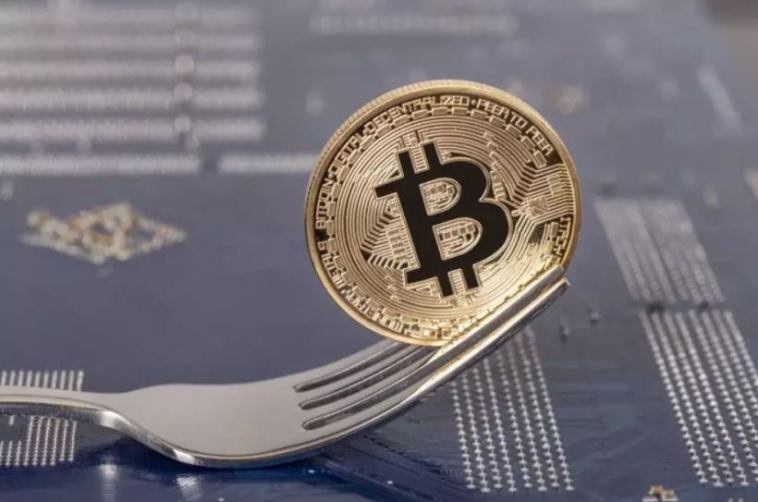- Like
- SHARE
- Digg
- Del
- Tumblr
- VKontakte
- Flattr
- Buffer
- Love This
- Save
- Odnoklassniki
- Meneame
- Blogger
- Amazon
- Yahoo Mail
- Gmail
- AOL
- Newsvine
- HackerNews
- Evernote
- MySpace
- Mail.ru
- Viadeo
- Line
- Comments
- Yummly
- SMS
- Viber
- Telegram
- JOIN
- Skype
- Facebook Messenger
- Kakao
- LiveJournal
- Yammer
- Edgar
- Fintel
- Mix
- Instapaper
- Copy Link
Introduction
Blockchain, a revolutionary technology, operates under several limitations and obeys specific ways. With problems like lag in propagation, which indicates an interval between the transmitting & receiving data of nodes, loss of transactions while transferring to recipients, and issues with node malfunction and transmission of incorrect information, Stakeholders are looking for technical renovations; that would improve performance of the blockchain.Visit at: bitcoin-motion.cloud
What is a Blockchain Fork?
Blockchain Fork is established when the fundamental protocols and rules of Blockchain technology are tampered with. This alteration in the protocols results in splitting the blockchain and establishing another blockchain. In this way, any subdivision in the blockchain network is called Blockchain Fork.
When the alignment of software used by miners differs, a fork comes into existence. Miners decide which blockchain to be selected, and if their decision contains variations, it creates two versions of the Blockchain. The nature of blockchain is decentralized which indicates that the blockchain network is a shared platform, and participants do not have any objection in this regard.
The unanimity among network nodes develops only one blockchain on which the transactions are authentic, and the network emphasizes them to be valid. Sometimes the consensus decision regarding the future of the blockchain contains conflicts. Such an event creates forks, which means the single chain is divided into two or more chains, but all the chains are authentic.
Types Of Blockchain Fork
Following are various types of Blockchain Fork.
Hard Forks
When new blocks are mined based on new rules and protocols by modifying the software, they become invalid for the older version of the software. Due to the hard fork, the latest currency develops. To avoid any material loss full nodes obtain an equal share of currency for software up-gradation. Full nodes have the decision-making power to choose the chain of their choice. In case the full nodes opt for a new chain the software is updated which validates the latest transactions.
For example, Ethereum, the 2nd best cryptocurrency, has upgraded its blockchain by replacing the POW with POS. The full nodes that will go for upgrading will utilize the latest consensus protocol, and the rest will automatically become outdated for the blockchain.
Soft Forks
When an alteration in the software running on the full nodes mines new blocks backed by new protocols and the older version of the software considers them authentic, Soft Fork is established. It is also known as backward compatibility.
For example, the Ethereum blockchain updates its protocols following the proof-of-stake mechanism instead of proof-of-work, the full nodes with up-gradation and the remaining nodes will be able to utilize the new consensus protocol. It means the other nodes in the blockchain would stay compatible.
Temporary Forks
When many miners altogether mine a new block, the network may not be willing to choose this block. Some miners might go for a block mined by a particular party, while others might opt for the available alternatives. Such a situation takes place due to time limitations for spreading information across the network that might disturb the events along with their chronological order. That is how a temporary fork comes into existence.
Is It Crucial To Learn About Blockchain Forks?
An update in the blockchain protocols that are not compatible with the older version will form a Fork. It is of vital importance to have some knowledge about the blockchain fork because the person who will not upgrade will lose the race and will be having an outdated version that is of no use now. If the majority shows consensus for an update, it becomes very convenient.
What Are The Reasons Behind The Occurrence Of Blockchain Forks?
The blockchain forks are developed due to following reasons.
- When it is required to add some new features and functionalities in the current blockchain version, forks appear.
- Crypto traders demand high security and safety for their transactions to fix these issues.
- If there is a situation in which you are willing to reverse the transaction, a fork develops.
Conclusion
Forking in the blockchain proves to be a significant factor in blockchain evolution. It assists in solving many issues and helps in updating the chain. Forking can also take place in the Bitcoin Blockchain that is effortlessly tradable using Bitcoin Trading Software.


